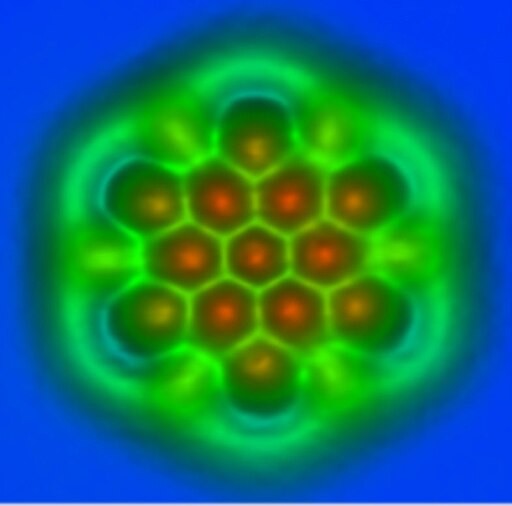Scientists have developed a new design concept for creating next-generation carbon-based quantum materials. This concept has the potential to accelerate the advancement of complex quantum computing technologies that would revolutionize information processing and high-density storage capabilities.

(Photo : Wikimedia Commons/ Patrik Tschudin)
What Is Magnetic Nanographene?
Magnetic nanographene is a small structure made of graphene molecules that exhibits unique magnetic properties due to the behavior of specific electrons in the pi-orbitals of the carbon atoms. As a small molecule made of fused benzene rings, magnetic nanographene is a promising next-generation quantum material for hosting quantum spins due to its long spin coherence time and chemical versatility.
If the arrangement of these carbon atoms is precisely designed at the nanoscale, scientists can achieve control over the behavior of these unique electrons. This makes nanographene very promising in creating tiny magnets and for fabricating basic building blocks required for quantum computers, known as quantum bits or qubits.
However, making highly entangled spins in such systems is daunting yet essential for creating scalable and complex quantum networks.
READ ALSO: Quantum Analysis Reveals the Transition of Anisotropic Materials in Layered Helical Magnets
Magnetic Nanographene Butterfly
At the National University of Singapore (NUS), experts created a tiny magnetic nanographene with a unique butterfly shape that hosts highly correlated spins. The study details are discussed in the paper "Highly entangled polyradical nanographene with coexisting strong correlation and topological frustration."
The research team was led by Associate Professor Lu Jiong from the NUS Department of Chemistry and Institute for Functional Intelligent Materials in collaboration with Professor Wu Jishan. The unique structure of the magnetic graphene that they developed contains four rounded triangles that resemble butterfly wings.
Each of these wings holds an unpaired pi-electron responsible for the observed magnetic properties. This structure was achieved through an atomic-precise design of the pi-electron network in the nanostructured graphene.
It is usually difficult to combine the magnetic properties to create multiple correlated spins. This is because nanographene predominantly exhibits a singular magnetic order, where spins align in the same direction (ferromagnetic) or opposite directions (antiferromagnetic).
The research team developed a butterfly-shaped nanographene with ferromagnetic and antiferromagnetic properties to overcome these challenges. This was formed by combining four smaller triangles into a rhombus at the center. The resulting nanographene measures about 3 nanometers in size.
The researchers made a notable molecule precursor through conventional in-solution chemistry to make the structure. Such a precursor was used for the subsequent on-surface synthesis and enabled the researchers to precisely control the shape and structure of the nanographene at the atomic level.
The new technique helps experts directly probe entangled spins to understand how magnetic nanographene works at the atomic level. Additionally, this breakthrough unlocks new possibilities for precisely controlling magnetism at the most miniature scale, leading to advancements in quantum materials research.
In the future, the research team aims to measure the spin dynamics and coherence time at the single-molecule level and manipulate the entangled spins coherently. It represents significant progress towards achieving more powerful information processing and storage capabilities.
RELATED ARTICLE: New Quantum Computer Application in Materials Science
Check out more news and information on Quantum Material in Science Times.














